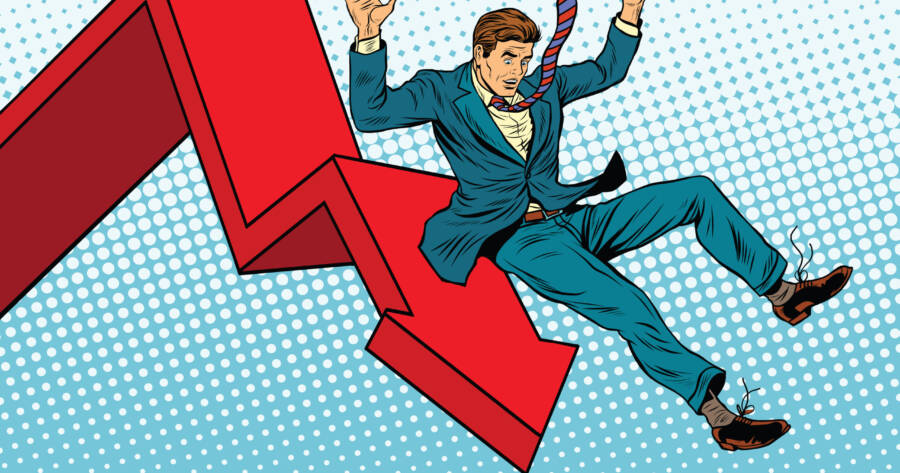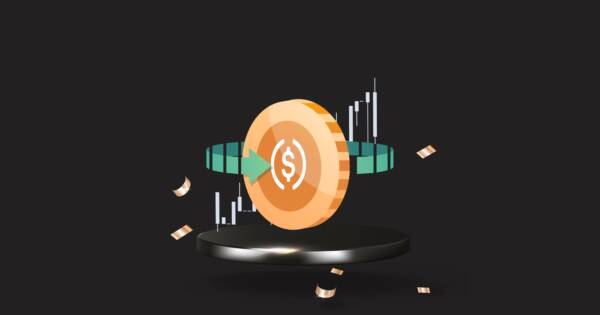I first learned about short selling from my Dad. It was in the dot-com crash of the early 00s, when practically every investment was going down. Many people lost their savings because they plowed too much money into ridiculously-valued tech stocks. Looking back in retrospect, these stocks were already so high that they had no real hope of earning money.
At the same time, there was a small subset of investors making serious bank. They were the short sellers. I can remember my Dad making a comment that I remember clearly to this day: “I refuse to profit off people losing their life savings.” At first, I didn’t understand. How can someone profit when the stock has tanked? I had a lot to learn.
My Mom was proud to hear him say it, though. And yes, there’s something admirable (and even ethical) about what he said. While my Dad wasn’t interested in shorting stocks, plenty of professional investors are. Does short selling a stock automatically mean you are hurting a different group of investors? What is short selling, anyway? We’ll tell you all about it, and how to short a stock of your own (if you really want).
What is Shorting a Stock?
For most people, investing in the stock market means that you buy shares in stocks. When the stock price goes up, you make money (assuming you’re willing to sell). Some stocks throw off dividends and others invest in funds. However, the basic premise is the same — you are betting that the value of the stock will go up after you buy it.
Short selling is the complete opposite. In essence, short selling is making a bet that stocks will go down. You will profit if the stock price goes down. This is because when you short a stock, you are “borrowing” shares and selling them. You don’t actually own them. Then you’re hoping to buy them back at a lower price and “return” them to their rightful owner. When it works out in your favor, you can pocket the difference for a tidy profit.
Here’s a Simplified Example
Let’s go over a simplified example. It’s the start of 2020, and you start to see more and more news about a new virus spreading in China. You consider that this virus could turn into a global health emergency (which it obviously did). That would tank economies everywhere and cause the stock market to crash, at least temporarily. In addition, you believe that a global pandemic would cause governments to shut down borders and place limits on air travel. Naturally, airline profits would suffer badly if these things come true (which they did).
So you decide to short the American Airlines stock (AAL). It was priced at $26.84, so you short 1,000 shares for a total of $26,840 on January 31, 2020. Then, all your pandemic predictions come true. Not only that, but things get even worse than you thought they would. The entire global economy shuts down and stock prices plummet. The price of AAL drops from your entry point down to a low of $9.09 by April 3.
Happy with your gains, you cover your short position. You waited a day though, and ended up buying the shares back for $10 apiece, costing you $10,000. You can’t complain though, since you still profited $16,840 — the difference between what you sold the borrowed for and how much it cost you to buy them back. Not bad for two months of speculation.
 Shutterstock
ShutterstockYou Need a Margin Account to Short Shares
When you sell a stock short, you are essentially borrowing shares you don’t own. Then you sell them to someone else who want to buy the stock. That’s why you need a margin account, as there’s borrowing involved. It’s more complicated than simply buying stock at one price and selling it later for another price.
It’s important to note that short sellers typically have to pay interest on their short positions. I didn’t include that in the example above, so the total profit from that scenario would actually be a bit less than the $16,840 we stated. Short sellers have to pay interest regardless of whether they have enough cash to pay for the shares they plan to buy back or not.
In the case of our example, the margin interest paid to the broker would eat into your profit of $16,840 a bit. But even if you only cleared $15,000 after paying a couple months of interest fees, that’s still a good deal, right?
Why Short Selling is Riskier Than Going Long
When you buy a stock, you put in your own capital and hope the price goes up. The worst case is a complete wipe out, which can happen if the company declares bankruptcy. In this unfortunate case, you lose all of your capital. While you may be able to salvage a small amount of value during a liquidation process, you’ll likely lose almost 100% of what you put in.
Short selling is even riskier. Let’s go back to our example with AAL. Unlike you, who profited handsomely by short selling AAL early, assume someone else tried to do the same thing — they just waited too long. They tried to execute a similar short sell for 2,000 shares, except they did it when the price was down at $9.09. His borrowed shares sold for $18,180. As long as the stock price kept dropping, he could buy the stock back and return in, keeping the profit.
Unfortunately for him, the stock market bottomed at the end of March. It’s been on a relentless tear ever since. He finally capitulated when the stock zoomed up to $25 apiece. He covered his short position, to the tune of a $50,000 expense. He also had to pay about $1,000 as interest for a total loss of $32,820. That’s a 181% loss on his original investment. Ouch.
Margin Requirements and Margin Calls
Our gambler was stubborn. He kept putting more cash into his brokerage account, so his position wouldn’t get margined called. If he wasn’t so stubborn (or didn’t have those deep pockets), his broker would’ve sold his shares much earlier to cover themselves.
This is because brokers require short sellers to maintain a certain amount of capital in the account so that they aren’t left holding the bag when trades go south. For stocks that trade in the New York Stock Exchange and NASDAQ, the minimum requirement is to have 100% of the current market value of the short sale, plus 25% of the value of the stocks in the margin account. This is known as the maintenance margin requirement. Some brokers, however, require even more. Charles Schwab, for example, requires short sellers to have at least 30% of the value in the account, instead of the 25% minimum set by the exchanges. This large capital requirement is why short selling is fairly uncommon among retail investors. It’s primarily done by professionals and hedge funds.
 Shutterstock
ShutterstockInitial Margin Requirement vs. Maintenance Margin Requirement
That’s not all. When you initiate a short position, you must meet the initial margin requirement. Governed by Regulation T, the Federal Reserve Board requires that a short seller has enough capital in the account to cover 150% of the market value of the stock they want to short sell before they can initiate a short position.
This 150% is basically derived by having 100% of the capital for the position, plus 50% to cover any price changes that go against the investor. Everyone knows that short selling can be risky, but they will let you do it as long as you have the cash on hand to cover everything if the share price doesn’t drop.
How Does These Margin Requirements Work in Real Life?
Our unlucky gambler’s initial short position was worth $18,180. In order for him to even start, he would need to have 150% of that amount in his brokerage account — $27,270. So he makes sure he has that much money in his account and short sells 2,000 shares of AAL.
As the price of AAL starts climbing, he starts to worry. That’s because his account is at Charles Schwab and their maintenance requirement is 30%. With the capital he has in the account, he can maintain his position until the price goes up to $10.48. That’s because as soon as the price is at $10.49, he would need $20,980 to cover his initial position. The maintenance capital of 30% requires him to have at least $27,274 (100% to cover + 30% to cover further fluctuations) in the account.
It didn’t take long. A day after he sold his shares short, AAL opened at $13.20 and closed at $12.25. Charles Schwab sends him a margin call notice and uses a price of $13 as the basis. He needs $26,000 to cover his position by then (2,000 shares x $13 a share), but he also needs at least $33,800 in the account (130% of $26,000) if he doesn’t want to get margin called.
Remember he originally put in $27,270 into the brokerage account. So now he needs to put in another $6,530 or else Charles Schwab would liquidate his position to cover themselves. To make matters worse, ACH electronic transfers take one business day. That would just take too long for the broker, who require funds to be wired within the hour or else his position would be liquidated.
You Could Get Multiple Margin Calls in the Same Day
He quickly complies by scrambling to the bank to wire funds over. Problem solved, right? Not so fast. The stock price quickly jumped up to $13.20 a share. At that new price, his margin requirement jumps up to $34,320. He just can’t deal with this anymore.
To make matters worse, let’s assume he lives on the West Coast. So he could be sleeping when the markets open every morning in New York City. How is he going to wire funds to his brokerage at 6:30am when he’s still sleeping (or banks aren’t even open)? If he misses a margin call notice, it could cost him a ton. So he puts another $100,000 into his brokerage account, just to be safe.
Do Short Sellers Provide Liquidity?
To the buyer, it doesn’t matter whether the shares came from someone who owns the stock or from someone who borrowed shares to sell. It’s exactly the same, since the buyer paid for shares and now owns them outright.
That’s why short sellers provide liquidity — just like any person who is willing to sell shares they own. When a trade happens, someone sells shares to a buyer for an agreed price. If no one is available to sell shares, then no trades happen. Obviously, there will always be someone available to sell shares in most stocks we are familiar with. However, stock prices are determined by supply and demand. The price is basically determined by the amount of the latest trade that’s executed on the exchange. That means that the more shares trade hands, the more accurate the price.
You want more people selling shares, even if some of them are short sellers. Also, the more sellers there are, the less any one buyer can affect the share prices.
Short Sellers Are Good for the Markets
In an extreme example, let’s say I want to buy a very illiquid stock. The quote shows that the stock is worth $1 a share. However, there are only a limited number of buyers willing to sell their shares around $1. Seller A wants to sell 1,000 shares at $1, short seller B wants to short sell 2,000 shares at $1.05, and seller C wants to sell his 10,000 shares at $1.10 apiece. If I wanted to buy 1,000 shares, then I would buy from seller A and the quoted price will stay the same at $1. But let’s say I want to buy 3,000 shares. I would buy everything seller A had to offer for $1 each. Then I would buy everything from short seller B too. In this case, the price would jump to $1.05 because that was the latest trade.
Now let’s say that short seller B wasn’t there at all. In this scenario, I would have to buy up everything seller A offered and buy 2,000 from seller C at $1.10 instead. In essence, my buy would have overwhelmed the market and pushed the price up to $1.10 instead.
The Short Sale Rule
Decades ago, traders could easily manipulate the price of a stock by continuing to short sell a stock. All they had to do was continually put in short sell orders. It would put relentless pressure on a stock and many profited unfairly with the practice.
That’s why the Securities and Exchange Commission (SEC) implemented the short sale rule in 1938, which states that a short sell order can only be executed at a price above the most recent trade. This is also called the uptick rule (or plus tick rule). The rule effectively bans short sell positions from being established on a downtick of the share price. This was a price stability protection mechanism, since it had the effect of slowing down short selling in a market crash.
However, after relentless lobbying and complaining by Wall Street, the SEC lifted this rule in 2007. Yes, just in time for the 2008 housing market catastrophe that caused the Great Recession. (By the way, go watch the movie The Big Short for an amazing look into this event.) We can’t really blame the horrific stock crash on the lack of a short sale rule, but the lack of a protection mechanism certainly didn’t help.
 Shutterstock
ShutterstockThe Alternative Uptick Rule
In 2010, the SEC reconsidered. They put into place what’s known today as the Alternative Uptick rule. Unlike the original short sale rule, this one is only triggered when the price of a stock drops by 10% or more from the previous day’s close. When it triggers, it’s in effect for the rest of the day, and the next trading day too.
Basically, when this condition is met, then short sells can only be established on a higher price than the best bid available on the marketplace. Otherwise on days when a stock price is relatively calm, traders are free to establish a position whether the last trade happened on a higher or lower price than the previous trade.
The Bottom Line
There are many people who makes a killing selling the market short. Quite a few famous hedge fund managers made a name for themselves selling the market short in major market crashes. However, short selling is much more complicated than just betting that a stock will go up. You have to worry about the direction, and you also have to pay interests along the way. The danger that keeps me far away from short selling are margin calls. Unless you put in a ton of capital in your brokerage account, then you have to continually watch your balances like a hawk.
Having said that, I’m not actually sure if my dad was right that short sellers are profiting off people losing money. Yes, the majority of stock owners are long holders. They make money when the price goes up and lose money when the price goes down. By shorting stocks, you are betting against a company. You will make money if a score of others lose money. In that sense, some people despise short sellers.
In the end, though, short sellers are simply selling shares they don’t own to people who want to buy the stock. Then they buy the stock back at lower prices, returning what they borrowed, and pocketing the difference. The buyers who lose money will buy those shares whether you have a short position or not. In fact, short sellers provide more liquidity to the market. So the buyer of those shares potentially gets to buy them at a better price than if you weren’t there to sell borrowed shares.
In a way, a short seller helps buyers who lose money lose less. Personally, I don’t short stocks for the reasons I’ve outlined. However, I have no ethical problems doing it either. On the other hand, some people believe it’s unethical to short sell a company into the ground, which major hedge funds have done on more than one occasion. What do you think?








